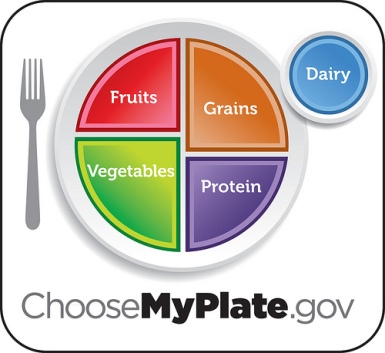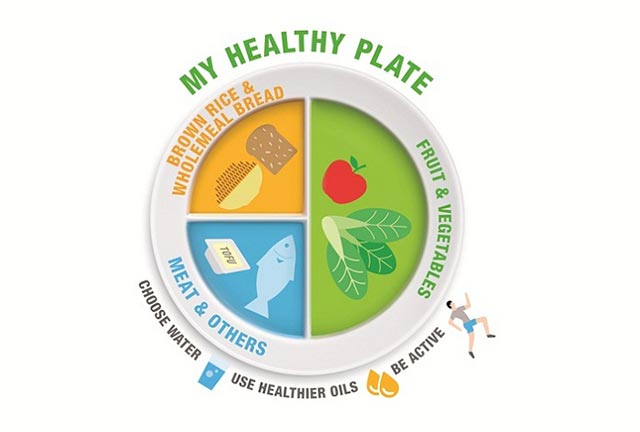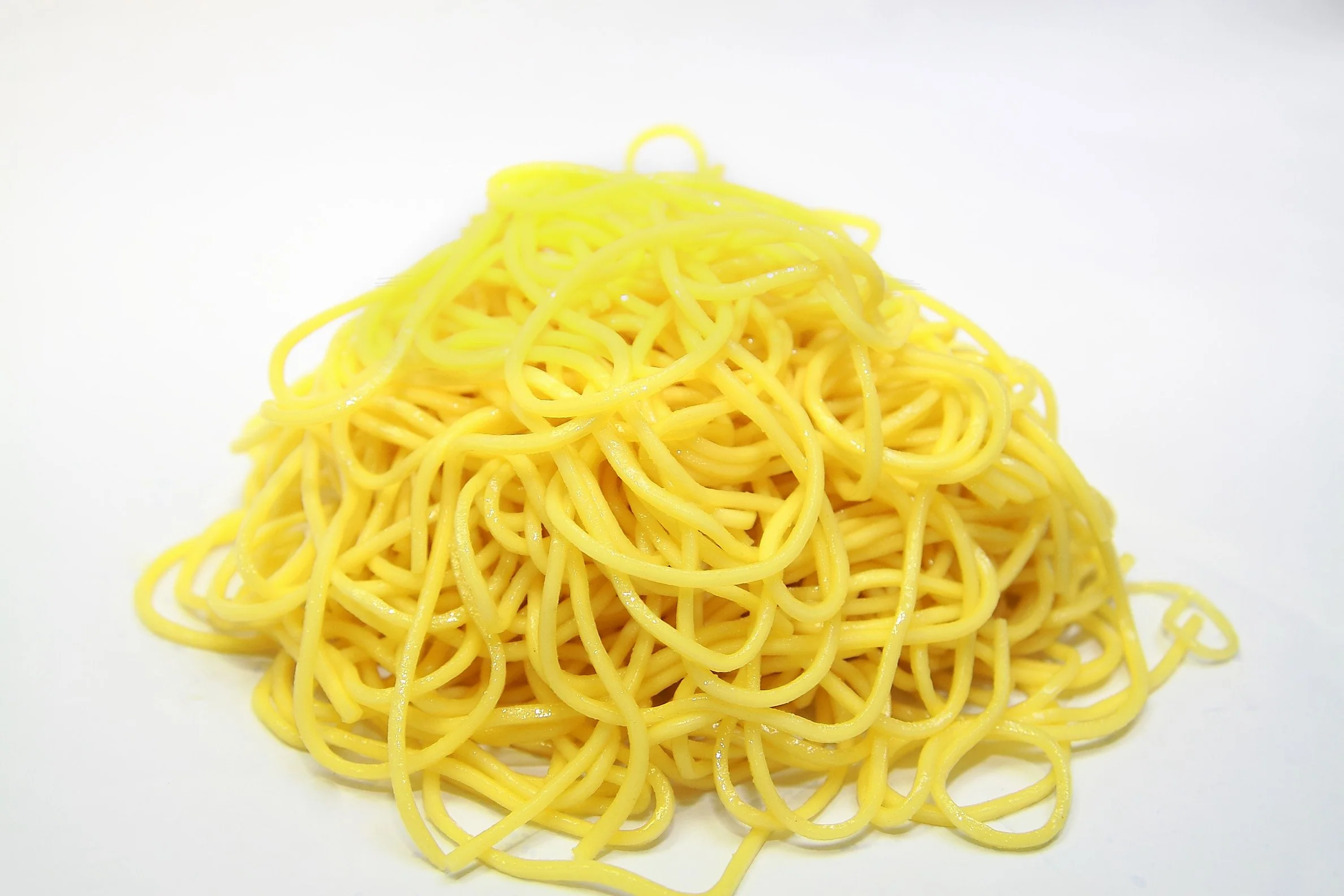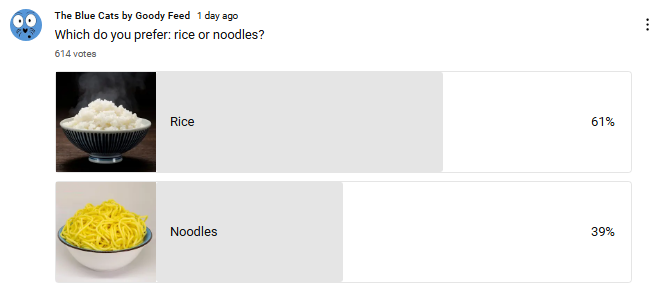Is rice or noodles better?
We’re going to assess based on hard figures, and then give the winner a point based solely on the number.
For example, if the nutrients in one food are better based on a specific key point, like the amount of protein it has, then it gets one point, and so on.
It’s not just about nutrients, though that falls under science, but you get the idea.
So eventually, whichever has the highest number of overall points wins.
If you prefer to watch a video about this topic instead, here’s one for you:
Now, before I start, let me add a disclaimer: If you have to choose between white rice and noodles, choose the third option: nothing.
Both rice and noodles are usually simple carbs, which means they’re unhealthy. You can survive without them in all your meals. But then again, you’d remember this: does that mean that this is wrong?


Yes, you see, this pyramid food chart was first created back in 1974 in Sweden but got popular in the US in 1992.
It showed that we need to eat lots of rice or noodles or bread, up to 11 servings, depending on what pyramid you see.
But here’s the thing: this was created back in Sweden because food prices were high, so they had to have this idea of having cheap, basic food. Of course, that meant having more rice, noodles, or bread, since they’re cheap.
Soon, other countries also started using it, but remember: back in the day, the key was to stay alive, not to stay healthy.
Because in the past, having enough food on the table was already a problem by itself.
Also, there were accusations that certain companies lobbied for this so we would buy more rice, noodles, and bread. Eventually, that was slowly changed to a healthy plate, like this:

Similarly, in Singapore, we’re now using this. You’d realize there’s no white rice or noodles.

So, long story cut short, contrary to what your dad said, you don’t need rice, noodles, or bread to survive.
Brown rice is fine, but there’s a problem: Some hawkers and restaurants actually mix lots of white rice with brown rice and still call it brown rice, so you might be misled into thinking that you’re eating brown rice when you’re having more white rice.
You can watch this video for more details:
Therefore, I’ll suggest that you either cook your own brown rice at home or avoid them altogether in eateries.
Now, with the health disclaimer out of the way, let’s move on to the battle between rice and noodles.
Types of Rice and Noodles for Comparison
We have to be very specific in our choice, so this comparison will be accurate.
For rice, it will be purely cooked white rice.
For noodles, we would be using this, commonly known as yellow noodles, instead:

We’re going to use 100g for both rice and noodles, but do note that usually, we eat more than 100g of rice or noodles. Also, we’re looking at cooked rice and noodles.
Different types of rice and noodles might have different figures, so note that this is just a rough estimate, and don’t cast these figures in stone.
Ready? Let’s begin.
Comparison Based on Science
First of all, we’re going to compare based on science.
For science, it’s mainly the nutrients, but there might be some other factors.
Firstly, it’s calories, which needs no explanation. The fewer calories, the better. For 100g of rice, there are about 130 calories. For 100g of yellow noodles, there are about 138 to 178 calories. Later, I’ll explain why the calories for noodles can vary so much. So in this case, there’s a clear winner: rice.
Rice: 1
Noodles: 0
Now, calories might be important, but they’re actually not as important as the glycemic load (GL).
Basically, the higher the GL, the worse it is, as it’ll spike your blood sugar, and excess blood sugar will be converted into fats.
If the GL is low, it’ll be digested slower, so your blood sugar won’t spike, and there won’t be excess sugar for your body to convert into fats.
For rice, the GL is about 26. For noodles, the GL is about 19. The lower the GL, the better, so noodles win here.
Rice: 1
Noodles: 1
Next, it’s protein.
Proteins are like a super nutrient that we need.
Not only can they help build muscles, but they also keep us full longer. Our bodies are built to look for protein, which can be used for energy if needed.
For 100g of rice, there is 2.7g of protein. For 100g of noodles, there is about 4.5g of protein. Moreover, noodles’ proteins are better because they come from eggs, so noodles win here.
Rice: 1
Noodles: 2
Next, fibre.
Fibre is a super nutrient that’s very underrated. You can watch this video that explains why fibre is extremely important for both your body and mind, and heck, even your immune system:
For 100g of rice, there’s 0.4g of fibre. For 100g of noodles, there’s 1.2g of fibre. Both are pretty low, but noodles are slightly better, so noodles win here.
Rice: 1
Noodles: 3
Finally, we should look at the amount of processing. By now, you should know that the more processed a food is, the more unhealthy it is.
You might be surprised to know that white rice is a processed food because the original version is actually brown rice. That’s why brown rice is healthier.
The key step in processing white rice is just to remove the outer husk, bran, and germ, so rice has only one ingredient. Noodles have many ingredients mixed into a dough and cut into noodles, which is why the calories can vary so much.
This means rice is less processed, so rice wins here.
Rice: 2
Noodles: 3
So as of now, based just on science, rice has 2 points, and noodles have 3 points. It’s neck and neck, so let’s move on to statistics.
Statistics of Rice & Noodles Globally
The global rice market is about USD$287.45 billion a year, while the entire noodles industry, including pasta, is only at USD$83.49 billion a year. Therefore, rice wins hands down.
Rice: 3
Noodles: 3
But do people really eat more rice?
While there are global rice consumption figures, I couldn’t find specific data for noodles since there are so many different types of noodles. However, on average, 6.815 trillion bowls of rice are consumed a year, while just under 117 billion servings of instant noodles are consumed a year.
Therefore, rice is still consumed a lot more than noodles, so rice wins here.
Rice: 4
Noodles: 3
Therefore, with science and statistics, rice now has 4 points, and noodles have 3 points. We’re still neck and neck, which brings us to the next point: survey in Singapore.
Survey in Singapore
We did a survey on our YouTube channel community page, asking people two questions. The first is, “Which do you prefer: rice or noodles?” and the second is, “When you order yong tau foo or mala, do you choose rice or noodles?”
In the first question, 61% chose rice.

But when asked again about yong tau foo or mala, a whopping 76% chose noodles instead.

Therefore, both rice and noodles gain 1 point each.
Rice: 5
Noodles: 4
Now, here are the overall results: Rice has 5 points, and noodles have 4 points. So, the winner is rice!
But, if possible, try not to eat these simple carbs. The goal is to cut down on these carbs, and not decide between these two!




